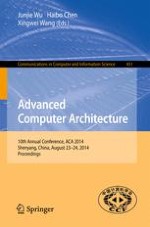2014 | Buch
Advanced Computer Architecture
10th Annual Conference, ACA 2014, Shenyang, China, August 23-24, 2014. Proceedings
herausgegeben von: Junjie Wu, Haibo Chen, Xingwei Wang
Verlag: Springer Berlin Heidelberg
Buchreihe : Communications in Computer and Information Science
